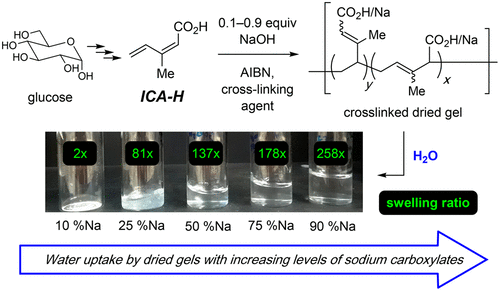Fahnhorst, G. W.; Hoye, T. R. ACS Sustainable Chem. Eng. 2019, 7, 7491–7495.
Isoprenecarboxylic acid (ICA-H), available from glucose via one of its major metabolites mevalonate, has been converted to cross-linked networks by radical polymerization. Monomer feeds comprising various ratios of ICA-H and its sodium salt (ICA-Na) were used to give hydrogels that show attractive performance in comparison with (nonbioderived) poly(acrylate) hydrogels. In particular, these new materials show increasing levels of water uptake (i.e., swelling ratio) across the entire range of ionization (10–90% Na). This behavior is attributed to the larger distance between carboxylate moieties in the hydrogels, a feature that reduces the average amount of charge repulsion between proximal sodium carboxylate ion pairs (counterion condensation).
